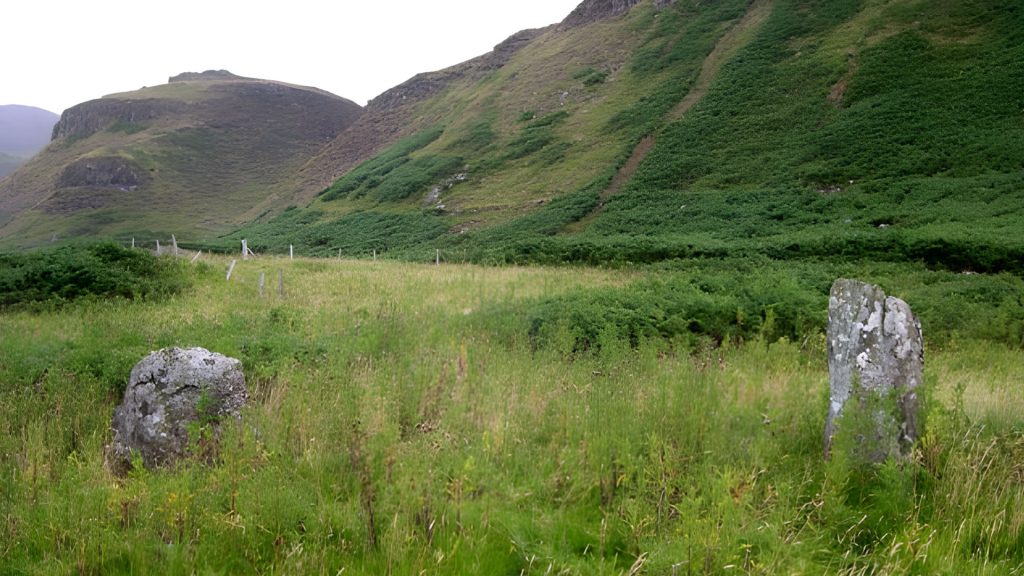The Isle of Ulva holds a rich and dramatic history. It spans millennia, from its earliest inhabitants to its modern-day community ownership. This compelling narrative of resilience and change is as intricate as the island’s landscape itself.
Early History: Mesolithic to Norse Influence
Archaeological evidence shows that people first inhabited Ulva over 7,000 years ago. For example, archaeologists have found a shell midden in Livingstone’s Cave. This midden dates back to 5650 BC and contains bones from Ice Age animals like the Arctic fox and lemming. These early inhabitants were Mesolithic hunter-gatherers. Furthermore, Neolithic standing stones, including some located west of Cragaig, date back to 1500 BC. They are a silent legacy of a pre-Celtic people who lived on the island before the Vikings arrived.

The Norse period, in fact, gave the island its name. “Ulva” likely comes from the Old Norse word Ullfur, which means “Wolf Island.” While the Vikings left few artifacts, they integrated the island into their Kingdom of the Isles. Over time, the influence of Norse culture faded, and the island came under the control of the Scottish kingdom.
The Clan MacQuarrie Era
The history of Ulva is deeply tied to Clan MacQuarrie. The clan possessed the island for over a thousand years. They were one of Scotland’s oldest clans. They traced their ancestry back to the 9th-century King of Scots, Kenneth MacAlpin. The clan followed the powerful Lords of the Isles. However, they gained independence after the Lords’ forfeiture in the late 15th century.

The last clan chief, Lachlan MacQuarrie, lived into his hundreds. He hosted famous visitors like Samuel Johnson and James Boswell in 1773. Yet, crippling debt forced him to sell the island to pay off his creditors. Lachlan’s death in 1818, at the age of 103, marked the end of the clan’s long-standing ownership of Ulva.
The Highland Clearances
Following the clan’s departure, the island’s new owners introduced a profitable kelp industry. This industry caused the population to grow significantly. By 1837, 604 people lived in 16 villages on Ulva. However, the kelp market collapsed, and the Great Potato Famine struck. These events made the island’s large population an economic liability.

Francis William Clark, who bought the island in 1835 for £29,500, began a brutal series of forced evictions. These clearances reduced the population from 570 in 1841 to just 70 by 1861. Many residents were forced to emigrate to North America and Australia. This tragic period of mass eviction left the ruined villages you see on the island today.
Recent History and Community Buyout
Ulva’s population continued to decline throughout the 20th century. By 2017, only six permanent residents remained. The future of the community looked bleak. Consequently, the North West Mull Community Woodland Company (NWMCWC) saw the urgent need for action.
In June 2018, the community group successfully purchased the island. They raised a total of £4.4 million from the Scottish Land Fund and a crowdfunding appeal. This community buyout secured Ulva’s future. It also aimed to reverse depopulation and restore the island’s economy. Today, the community works to renovate housing, attract new residents, and develop sustainable businesses.

